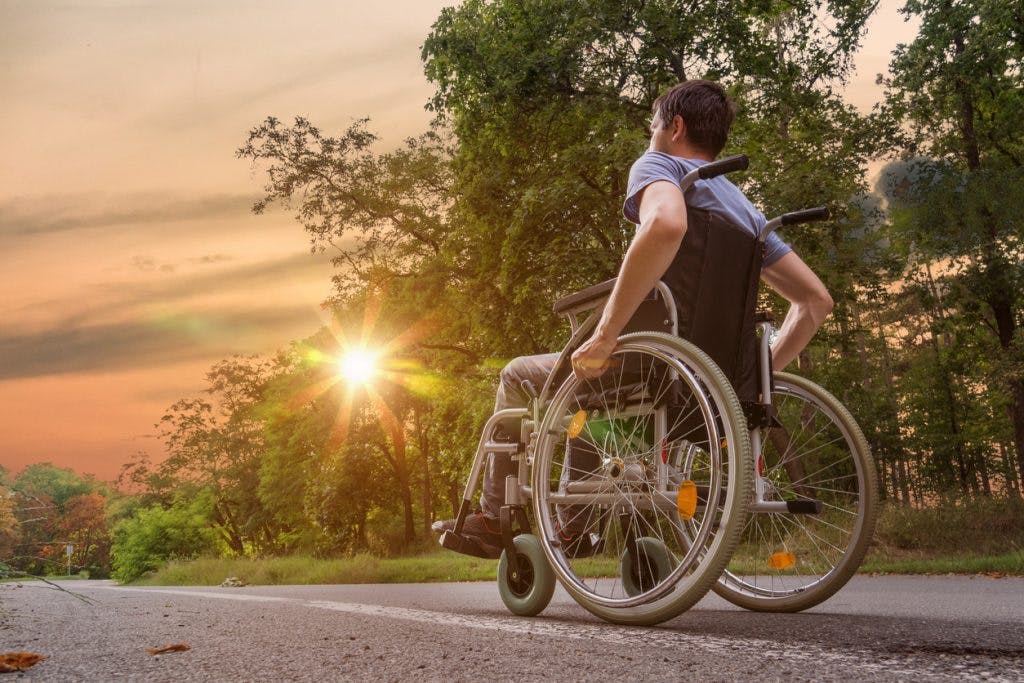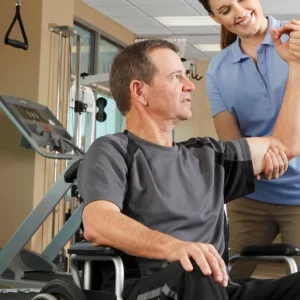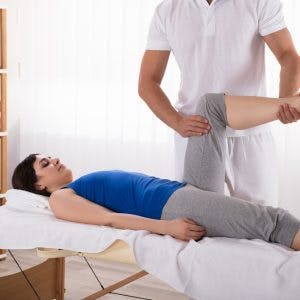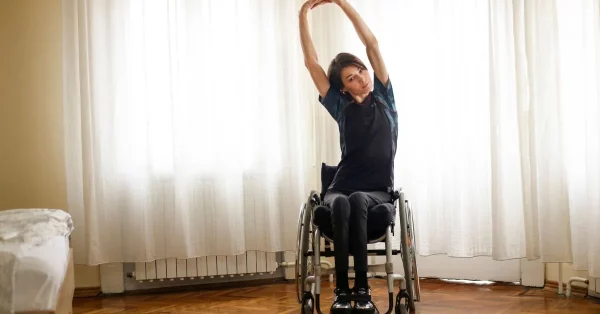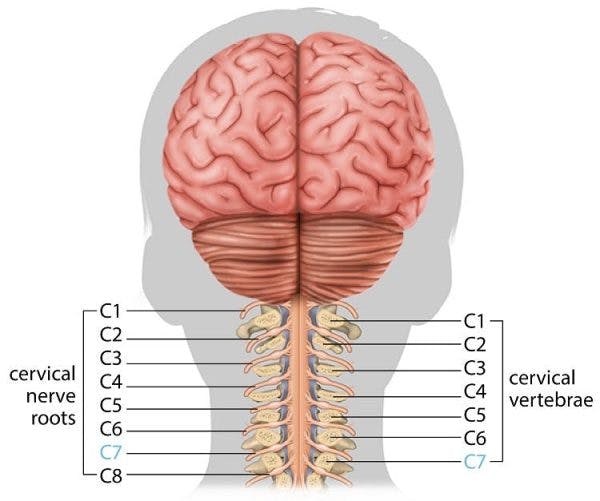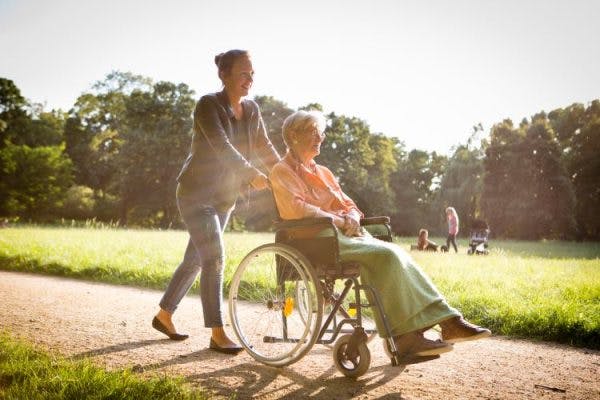About 20% of all spinal cord injuries result in incomplete paraplegia, according to the National Spinal Cord Injury Statistical Center. While incomplete paraplegia can affect your ability to walk and control bowel and bladder functions, it may be possible to recover these functions.
To help you understand what to expect and how to recover, this article will answer frequently asked questions about incomplete paraplegia.
What Is Paraplegia?
When you break it down, ‘para’ means two and ‘plegia’ means paralysis. Therefore, paraplegia refers to the paralysis of two limbs, specifically the legs.
Paraplegia is caused by damage to the thoracic, lumbar, or sacral regions of the spinal cord. Individuals with thoracic spinal cord injuries will also experience paralysis of muscles in the trunk. In contrast, damage to the cervical region of the spinal cord will result in paralysis of both the upper and lower limbs, also known as quadriplegia.
Spinal cord injuries can affect many functions including walking ability, bowel and bladder control, sexual functions, and balance. Fortunately, individuals with paraplegia have a lot of potential to regain independence because of their unaffected upper extremity functions. Individuals should still be able to grab objects, operate a manual wheelchair, and perform many other activities of daily living.
What’s the Difference Between Complete and Incomplete Paraplegia?
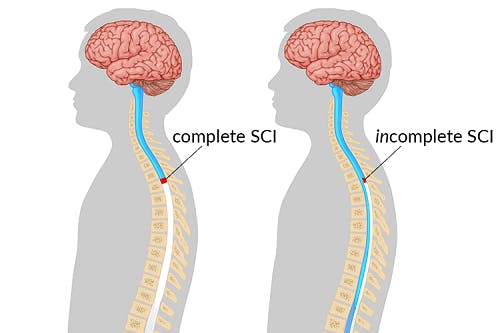
Incomplete paraplegia means that the injury has not completely severed your spinal cord and some neural circuits between the brain and body still exist!
With incomplete paraplegia, you’ll likely have some degree of sensation and/or movement control in the affected regions of your body. In contrast, complete paraplegia means that you have no control or feeling below your injury site because all the neural pathways have been damaged.
In terms of recovery outlook, only spared neural pathways in the spinal cord are capable of making adaptive changes. Because individuals with less severe spinal cord injuries have more spared neural pathways, they typically have more positive recovery outlooks.
However, it is possible to mistake an incomplete spinal cord injury for a complete one. After an SCI, patients often experience spinal shock, losing all functions and reflexes below their level of injury. Luckily, this is a temporary condition and reflexes may gradually start to return after inflammation starts to die down.
As a result, spinal cord injury patients may be pleasantly surprised to find out that their injury isn’t as bad as it initially appeared.
What Are Some Realistic Recovery Goals for People with Incomplete Paraplegia?
Individuals with incomplete paraplegia typically have a better recovery outlook than those with complete paraplegia, incomplete quadriplegia, and complete quadriplegia. This is because fewer functions will be affected.
However, even amongst individuals with incomplete paraplegia, functional outcomes and recovery goals can significantly vary.
The severity of injury plays an essential role in incomplete paraplegia recovery outlook. The more severe an injury is, the less spared neural pathways exist. Damaged regions of the spinal cord cannot regenerate, so the amount of spared neural pathways is critical to determining the potential to relearn affected functions.
Because every spinal cord injury is different, it’s essential to get a functional evaluation from a physical therapist. They will help personalize a rehabilitation program catered to your specific strengths and weaknesses.
Ultimately, the goal of recovery from incomplete paraplegia is to recover as much mobility as possible and minimize the risk of secondary complications. Breaking down your main goal into smaller goals will help make recovery more accessible and less overwhelming.
Common recovery goals for incomplete paraplegia include:
- Strengthening the core to improve balance and posture
- Full range of motion and control at the hips
- Bowel and bladder control, or at least the ability to perform a bowel or bladder program independently (i.e. self-catheterization and/or use of suppositories, etc.)
- Bending and extending the knees
- Rotating the ankles
- Standing
- Walking
Walking with incomplete paraplegia can be a realistic recovery goal. However, individuals will need to put in the work during physical therapy to promote recovery.
Is There a Treatment for Incomplete Paraplegia?
Although treatment for spinal cord injury does not currently exist, there are promising clinical trials that suggest a bright future for SCI recovery.
Electrical stimulation and stem cell therapy show great potential as treatments for incomplete paraplegia.
Electrical Stimulation
Epidural stimulation is a type of electrical stimulation that can provide individuals with incomplete paraplegia the boost they need to jumpstart movement of paralyzed limbs.
It involves surgically implanting a stimulator onto the lower region of the spine. The stimulator helps promote movement by emitting electrical currents that mimic brain signals to neurons below the site of injury.
This study found that by using epidural stimulation for 15 weeks, a patient with T1 incomplete paraplegia was able to achieve overground walking with a walker and stand independently for about 50 minutes at a time.
Stem Cell Transplants
Unlike epidural electrical stimulation, which works around the spinal cord injury, stem cell treatments focus on repairing the injury by promoting neural regeneration.
Stem cells are promising for SCI recovery because they can differentiate into a variety of different cell types and divide infinitely. Ideally, transplanting stem cells into the spinal cord should promote regeneration and replacement of damaged neurons.
However, stem cell research for spinal cord injury is still very much a work in progress because the spinal cord is extremely complex and doesn’t heal the same way the rest of the body does. Many mechanisms underlying SCI treatment have yet to be understood.
Intensive Gait Training
Intensity of rehabilitation can significantly affect recovery from incomplete paraplegia. The spinal cord can learn and forget movements, which makes consistent, high-repetition practice essential.
Neuroplasticity is the spinal cord’s ability to make adaptive changes and rewire itself. Task-specific and highly repetitive physical training will help promote neural rewiring and strengthening. As a result, affected movements will gradually start to feel more natural as your brain, body, and spinal cord will learn how to work in sync again.
After spinal cord injury, you need to reteach your body how to move. Gait training is a type of physiotherapy that focuses on developing your walk. This can include using weight-supporting treadmills, parallel bars, walkers, and crutches.
Both epidural stimulation and stem cell therapy will not be possible without intensive gait training because individuals will not know how to walk. Intensive gait training will promote rewiring of neural pathways and strengthen new connections between the muscles, spinal cord, and brain.
How Do I Exercise with Incomplete Paraplegia?
With incomplete paraplegia, arm exercises are generally not a problem unless you have a thoracic SCI and experience balance difficulties due to weakened core muscles. In fact, many individuals with paraplegia end up over-using their arms to compensate for motor impairments in the legs.
That being said, it is important to keep your upper body as strong as possible(without over-doing it), since you will be relying on your arms more than normal. Try to move as much as you can. It will help familiarize your body with movements and promote neuroplasticity in the spinal cord.
Even if you have very limited leg mobility after spinal cord injury, exercise is essential to minimize poor circulation, muscle atrophy, and unnecessary pain.
Individuals with severe incomplete paraplegia should practice passive range of motion exercises. Passive exercise does not require active movement of paralyzed limbs. Instead, individuals can use their arms to practice guiding the legs through their entire range of motion, or have a caregiver assist them. While it won’t strengthen the muscles, passive exercise can help maintain flexibility in the joints and stimulate the spinal cord.
Depending on the severity of your incomplete paraplegia, you may not need to use a wheelchair. Instead, using crutches or a walker can help you practice walking movements without losing balance. Or, you may start off using a wheelchair but later progress out of it. Your physical therapist will be able to assess what type of mobility device is appropriate for you at any given phase of your recovery.
It may also be beneficial for spinal cord injury patients with incomplete paraplegia to practice standing and walking in a pool, when it is safe to do so and with supervision if necessary. The water will make you feel weightless and significantly reduce pressure on the joints so you can focus on form.
What Can I Do to Promote Recovery from Home?
Rehabilitation doesn’t stop after discharge. Individuals with incomplete paraplegia can significantly benefit from continued physical therapy and home exercise.
The problem is, many individuals struggle to stay motivated and perform the repetitions necessary to promote neuroplasticity in the spinal cord. Thousands of repetitions are required to stimulate neuroadaptive changes in the central nervous system.
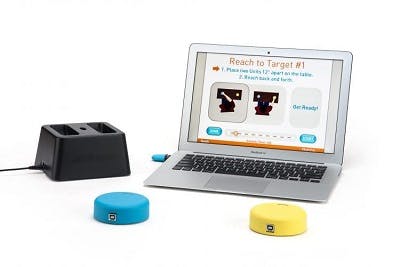
Flint Rehab’s FitMi is a home rehabilitation device designed to keep users engaged and challenged while performing repetitive exercises.
With over 40 exercises designed to improve mobility in the hands, arms, trunk, and legs, individuals can get a full-body workout from home.
The FitMi challenges users to perform exercises using 2 sensorized pucks. As individuals improve, they’ll unlock new difficulty levels. This allows them to stay challenged and motivated throughout their entire recovery journey.
How Long Does Recovery from Incomplete Paraplegia Take?
Every spinal cord injury is different and has a unique recovery process. Not only does the location and severity of your injury affect recovery outlook, but also how much effort you put into therapy and managing secondary complications.
Generally, the most recovery will occur within the first six months to a year following your SCI. After a traumatic event like spinal cord injury, the spinal cord experiences a heightened state of neuroplasticity, which makes it easier to relearn functions.
While recovery often slows after this initial period, the spinal cord never runs out of neuroplasticity. Your spinal cord is constantly adapting. When you stimulate it through repetitive movements, it understands that there’s a demand for that function and will adapt.
Incomplete paraplegia recovery is not linear, so trust in the process and keep practicing. Many people can continue to see results years after their injury.
Understanding Incomplete Paraplegia
Incomplete paraplegia is an outcome of spinal cord injury that describes paralysis, and potentially loss of sensation, of the lower body.
Because undamaged neural pathways exist when the injury is incomplete, it may be possible for individuals to recover weakened functions through intensive rehabilitation.
Hopefully, this article helped you better understand what incomplete paraplegia is and its recovery outlook.
